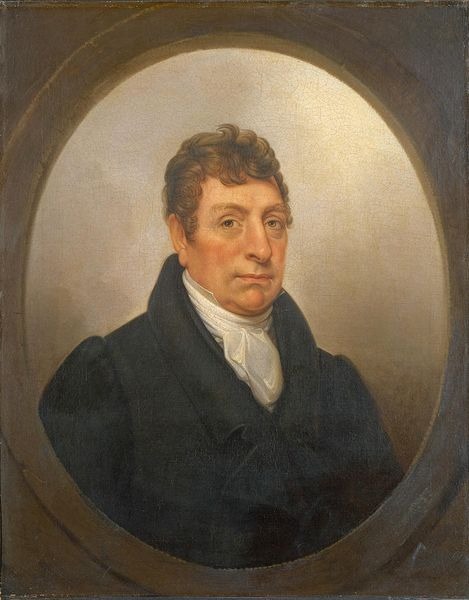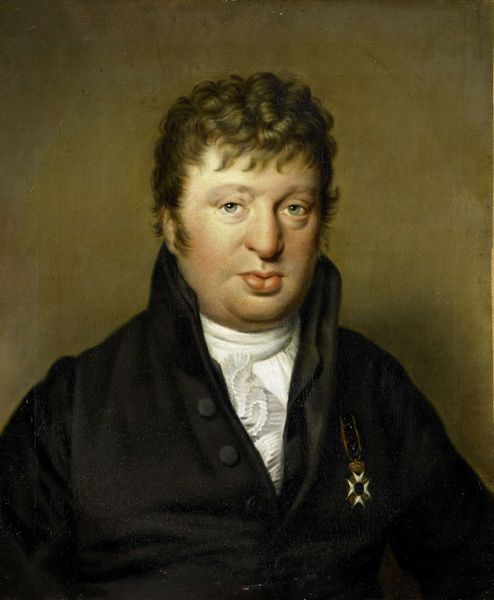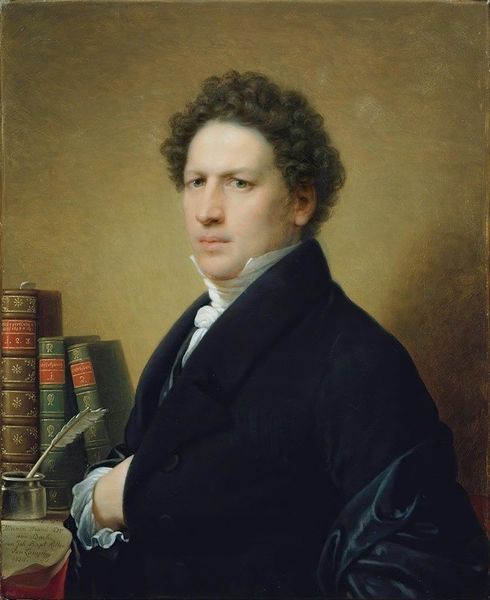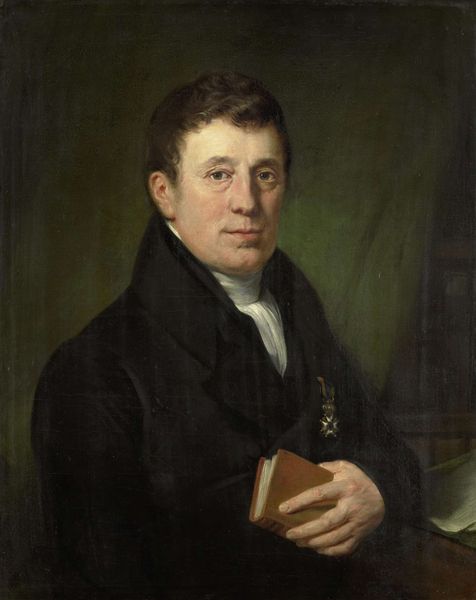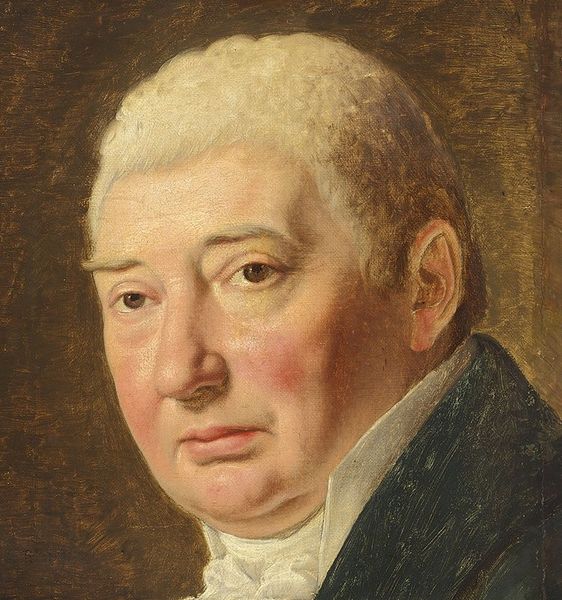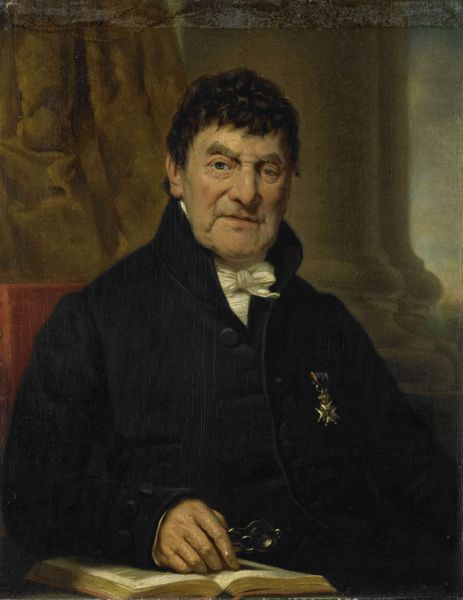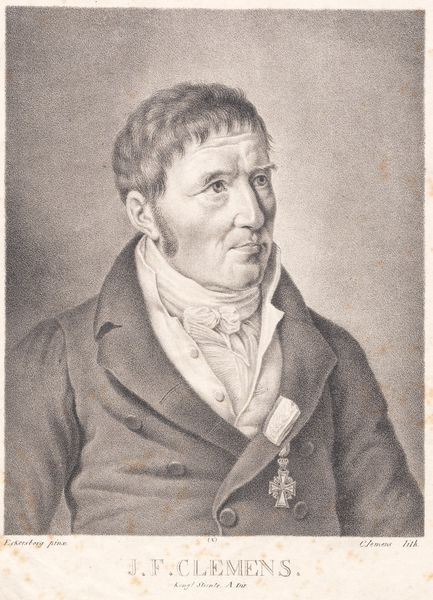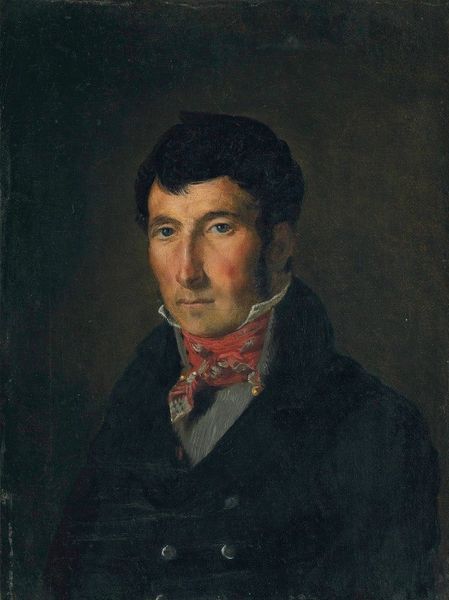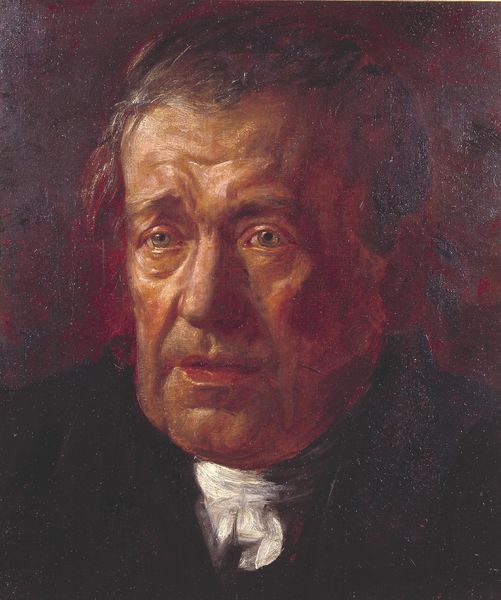
painting, oil-paint
#
portrait
#
painting
#
oil-paint
#
romanticism
#
history-painting
#
academic-art
Dimensions: 23.2 x 19 cm
Copyright: Public domain
Curator: What strikes me first about Peter Fendi's 1829 oil painting, "The writer August Rockert," is its surprising intimacy. Editor: I agree. It's an understated piece, wouldn’t you say? The color palette feels rather muted and reserved. Despite being a formal portrait, there’s a palpable sense of quiet contemplation. I find myself drawn in, wondering about Rockert’s story. Curator: Absolutely. Look closely, and you'll see Fendi employed symbolic shorthand here. Rockert is turned slightly, not engaging the viewer directly, but that almost feels more compelling because you sense this man's thoughts extend far beyond the frame. His very slightly averted eyes are meaningful in that sense. Editor: And notice the faint landscape in the background, it provides a stark contrast to the darkness, perhaps a reflection of his inner life? Curator: Possibly, or it could simply function as a memento mori, landscape conventions often operate as such reminders within Romanticism. I feel the small details in his patterned cravat, hint at a connection between personal aesthetics and Romantic self-fashioning of the period. Editor: Indeed, and his slightly disheveled hair and plain jacket suggest a more intellectual and less performative kind of masculinity. Also interesting that the composition feels surprisingly modern, wouldn’t you agree? I think it’s got something to say about how men create, what conditions allow them, what’s deemed important about the interior of the writer and therefore society too. Curator: It definitely anticipates later trends in portraiture! For me the appeal lies also in trying to decipher this character based on his appearance, like divining hidden stories encoded into the folds of his coat. It connects me to both the past and how portraiture itself evolves to mean something else as generations look upon images from their cultural memory. Editor: Ultimately, this quiet portrait prompts me to think about the uncelebrated figures of any historical movement. What voices were left unheard or unsung at that time? Who writes our narratives? Curator: It leaves us contemplating what’s both concealed and revealed in a deceptively simple painted surface. Editor: Indeed, a study in understated observation.
Comments
No comments
Be the first to comment and join the conversation on the ultimate creative platform.
